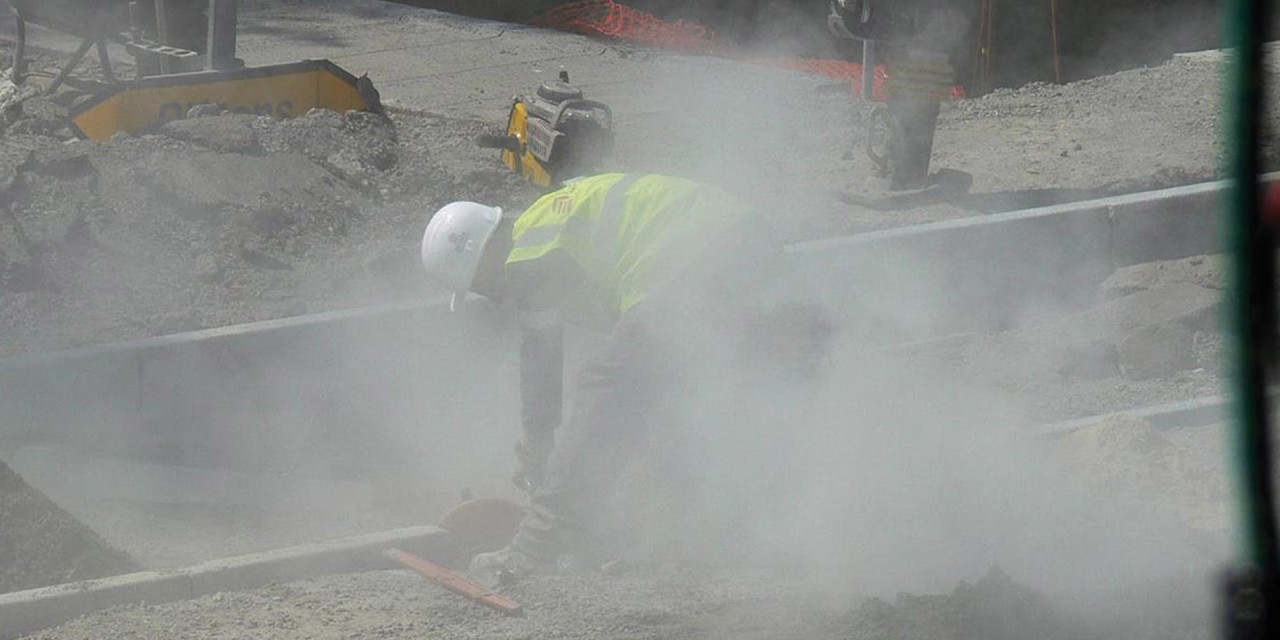Deep in the heart of the Snowy Mountains, a vital hub of activity buzzes with anticipation and progress. But recently, a shadow was cast over the Lobs Hole concrete lab at the prestigious Snowy 2.0 project. As workers toiled away, a concerning issue emerged – silica exposure.
The closure of the concrete testing lab sent ripples through the project, signaling a critical moment in ensuring worker safety and well-being. SafeWork NSW’s intervention shed light on potential risks lurking within the lab’s walls, specifically related to respirable crystalline silica (RCS) exposure.
“SafeWork NSW documents revealed concerns about workers being exposed to respirable dust and RCS in the lab building at Lobs Hole,”
highlighting the urgency of addressing this pressing issue head-on.
As work grinded to a halt at the concrete lab since mid-May, efforts have been focused on remediation measures. The task at hand involves thorough cleaning of surfaces, installation of improved ventilation systems, and stringent control measures implementation.
In response to these developments, Snowy Hydro emphasized its unwavering commitment to safety and quality standards. With up to 12 employees directly impacted by the lab’s closure, safety precautions were paramount in ensuring minimal disruption to ongoing operations.
Despite challenges posed by the closure, concrete testing operations persevered thanks to swift redirection strategies. Alternative labs stepped up seamlessly to uphold testing continuity while prioritizing worker safety above all else.
The gravity of silica exposure risks extends beyond this isolated incident; it reverberates across industries where such hazards loom large. Profound insights from Monash University professor Jane Bourke underscored this point eloquently.
Bourke highlighted that various sectors like tunnelling, mining, construction, and even stone fabrication face inherent silica dust dangers. She warned against complacency regarding silica exposure:
“There’s no safe levels of silica… exposure is dangerous and everything should be done to ensure that workers are not exposed.”
In response to these challenges, Future Generation Joint Venture (FGJV), as principal contractor overseeing Snowy 2.0’s execution, reiterated its steadfast commitment towards workforce well-being. Collaborative efforts with health authorities underscored FGJV’s proactive stance in upholding stringent safety protocols.
The saga unfolding at Lobs Hole serves as a poignant reminder of industry-wide health risks associated with airborne contaminants like crystalline silica. The untiring pursuit for safer work environments remains imperative as projects like Snowy 2.0 forge ahead into uncharted territories.
Amid setbacks and hurdles encountered along Snowy 2.0’s ambitious path towards energizing Australia’s national grid by 2027 lies an unwavering resolve—a testament echoed by stakeholders emphasizing safety as non-negotiable.
As stakeholders rally together in navigating these challenges head-on, one thing rings clear—the quest for progress must always be underpinned by an unwavering commitment towards safeguarding every individual contributing their expertise towards monumental endeavors like Snowy 2.0.

